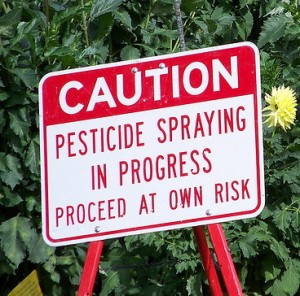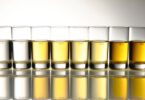Contributing Writers for Wake Up World
Much of the produce that is sold today in supermarkets is supplied from farmers who practice conventional farming methods. In other words, the produce has been grown using chemical fertilizers as well as pesticides and herbicides.
Many scientific studies suggest that the effects of synthetic pesticides can be detrimental to our health; one study suggests that the consumption of pesticides may lead to ADHD in children; in some other cases, exposure can lead to many forms of cancers, infertility problems and birth defects. Along with the many other poor ‘food like’ products we are eating, there is an array of foreign substances that are entering our bodies.
As we expose ourselves to these synthetic substances over the years, our bodies become overloaded, and our ‘cleaning’ mechanisms fail to work. As a result, many of us develop sickness and disease because our bodies cannot efficiently remove these toxins anymore. In order to help give your body a break from this chemical onslaught, we have suggested what foods should be eaten organically. The foods listed below are some of the most toxic to our bodies if eaten from conventional sources. Based the Environment Working Group (EWG), they contain the most pesticides on or in them compared to other foods; so, if you are considering in switching to organic, we would suggest considering the below foods as a first propriety in your transition.
Top 12 Foods You Should Eat Organically (From lowest to highest amount of pesticides)
[pro_ad_display_adzone id=”110028″]
1. Apples: They contain 42 known pesticide residues found by the USDA Pesticide Data Program. Out of the 42 pesticide residues, there are 7 known carcinogens, 19 suspected hormone disruptors, 10 neurotoxins, 6 developmental or reproductive toxins, and 17 honeybee toxins.
2. Cherries: They contain 42 known pesticide residues found by the USDA Pesticide Data Program. Out of the 42 pesticide residues, 7 known or probable carcinogens, 22 suspected hormone disruptors, 7 neurotoxins, 8 development or reproductive toxins, and 18 honeybee toxins.
3. Green Beans: They contain 44 known pesticide residues found by the USDA Pesticide Data Program. Out of the 44 pesticide residues, there are 8 known carcinogens, 22 suspected hormone disruptors, 11 neurotoxins, 8 developmental or reproductive toxins, and 18 honeybee toxins.
4. Collard Greens: They contain 46 known pesticide residues found by the USDA Pesticide Data Program. Out of the 46 pesticide residues, there are 9 known carcinogens, 25 suspected hormone disruptors, 10 neurotoxins, 8 developmental or reproductive toxins, and 25 honeybee toxins.
5. Spinach: It contains 48 known pesticide residues found by the USDA Pesticide Data Program. Out of the 48 pesticide residues, there are 8 known carcinogens, 25 suspected hormone disruptors, 8 neurotoxins, 6 developmental or reproductive toxins, and 23 honeybee toxins.
6. Sweet Bell Peppers: They contain 49 known pesticide residues found by the USDA Pesticide Data Program. Out of the 49 pesticide residues, there are 11 known carcinogens, 26 suspected hormone disruptors, 13 neurotoxins, 10 developmental or reproductive toxins, and 19 honeybee toxins.
7. Lettuce: It contains 51 known pesticide residues found by the USDA Pesticide Data Program. Out of the 51 pesticide residues, there are 12 known carcinogens, 29 suspected hormone disruptors, 9 neurotoxins, 10 developmental or reproductive toxins, and 21 honeybee toxins.
8. Blueberries: They contain 52 known pesticide residues found by the USDA Pesticide Data Program. Out of the 52 pesticide residues, there are 8 known carcinogens, 24 suspected hormone disruptors, 14 neurotoxins, 7 developmental or reproductive toxins, and 21 honeybee toxins.
9. Strawberries: They contain 54 known pesticide residues found by the USDA Pesticide Data Program. Out of the 54 pesticide residues, there are 9 known carcinogens, 24 suspected hormone disruptors,11 neurotoxins, 12 developmental or reproductive toxins, and 19 honeybee toxins.
10. Kale: It contains 55 known pesticide residues found by the USDA Pesticide Data Program. Out of the 55 pesticide residues, there are 9 known carcinogens, 27 suspected hormone disruptors, 10 neurotoxins, 10 developmental or reproductive toxins, and 23 honeybee toxins.
11. Peaches: They contain 62 known pesticide residues found by the USDA Pesticide Data Program. Out of the 62 pesticide residues, there are 10 known carcinogens, 29 suspected hormone disruptors, 12 neurotoxins, 11 developmental or reproductive toxins, and 25 honeybee toxins.
12. Celery: It contains the most at 64 known pesticide residues found by the USDA Pesticide Data Program. Out of the 64 pesticide residues, there are 13 known carcinogens, 31 suspected hormone disruptors, 12 neurotoxins, 14 developmental or reproductive toxins, and 20 honeybee toxins.
Honourable Mentions
Broccoli: It contains 33 known pesticide residues found by the USDA Pesticide Data Program.
Cucumbers: They contain 35 known pesticide residues found by the USDA Pesticide Data Program.
Grapes: They contain 34 known pesticide residues found by the USDA Pesticide Data Program.
Potatoes: They contain 37 known pesticide residues found by the USDA Pesticide Data Program.
Tomatoes: They contain 35 known pesticide residues found by the USDA Pesticide Data Program
5 Foods that Contain the Lowest Pesticide Residues
Bananas: They contain 12 known pesticide residues found by the USDA Pesticide Data Program. Out of the 12 pesticide residues, there are 4 known carcinogens, 7 suspected hormone disruptors, 2 neurotoxins, 5 developmental or reproductive toxins, and 2 honeybee toxins.
Grapefruit: It contains 11 known pesticide residues found by the USDA Pesticide Data Program. Out of the 11 pesticide residues, there are 4 known carcinogens, 4 suspected hormone disruptors, 4 neurotoxins, 4 developmental or reproductive toxins, and 2 honeybee toxins.
Almonds: They contain 9 known pesticide residues found by the USDA Pesticide Data Program. Out of the 9 pesticide residues, there are 1 known carcinogens, 4 suspected hormone disruptors, 3 neurotoxins, 0 developmental or reproductive toxins, and 4 honeybee toxins.
Asparagus: It contains 9 known pesticide residues found by the USDA Pesticide Data Program. Out of the 9 pesticide residues, there are 1 known carcinogens, 7 suspected hormone disruptors, 4 neurotoxins, 3 developmental or reproductive toxins, and 5 honeybee toxins.
Onion: It contains 1 known pesticide residues found by the USDA Pesticide Data Program. Out of the 9 pesticide residues, there are 0 known carcinogens, 0 suspected hormone disruptors, 0 neurotoxins, 0 developmental or reproductive toxins, and 0 honeybee toxins.
When buying produce always consider buying organic. Better yet, to ensure freshness, ensure to buy local as much as you can. When you can buy both local and organic, you can guarantee that the product is both free of pesticides, and full of nutrients. Further to this, you will also avoid any potential foods that may have been genetically modified. To check out pesticide residues on other sources of food, you may visit: whatsonmyfood.org. By substituting the top 12 pesticide laden foods with organic, you can eliminate up to 80% of pesticides from your diet.
Sources: whatsonmyfood.org/index.jsp
[adrotate group=”14″]
About the Authors
Jordan and Kyla are passionate about health; together, they have overcome many illnesses through dietary and lifestyle changes, and the art of practicing a positive mindset daily. Kyla is currently studying to become a Registered Holistic Nutritionist and Reiki Master, and Jordan is currently learning about traditional North American medicinal herbs, in hopes of becoming a Certified Herbalist. For more information, please visit the following sites; guidinginstincts.com, Facebook, Twitter, Google+, or Pinterest
This story was also published on GreenMedInfo
[pro_ad_display_adzone id=”110027″]







